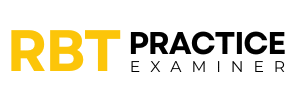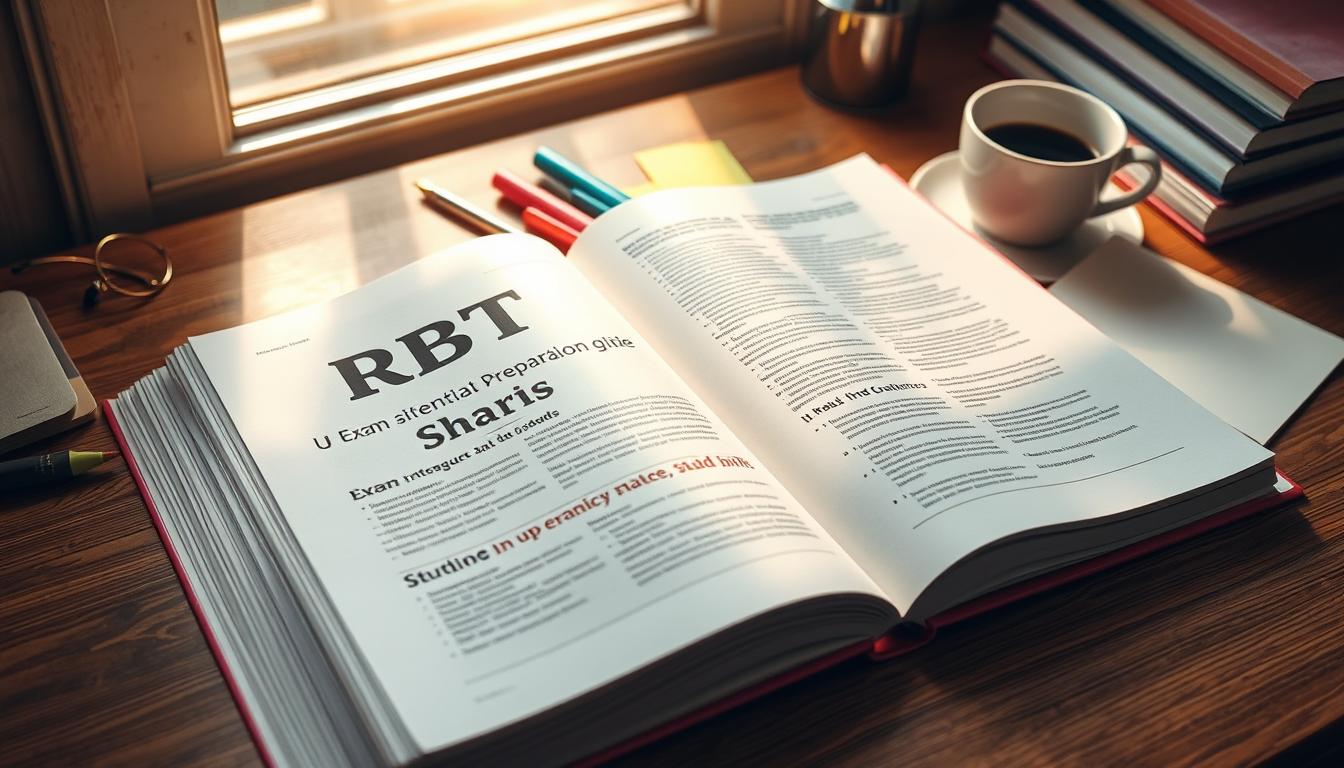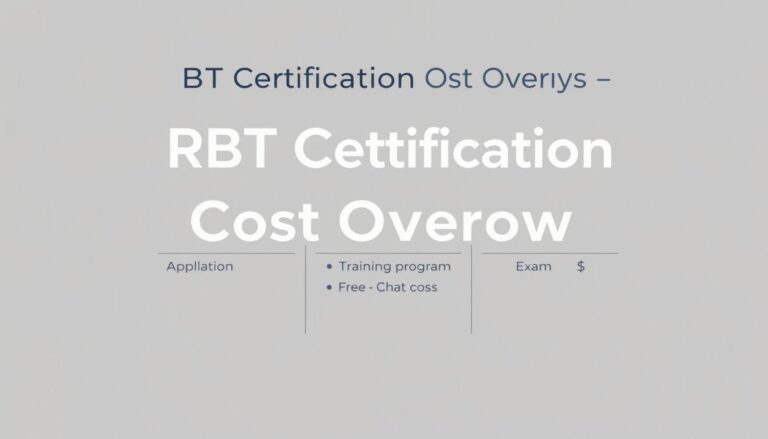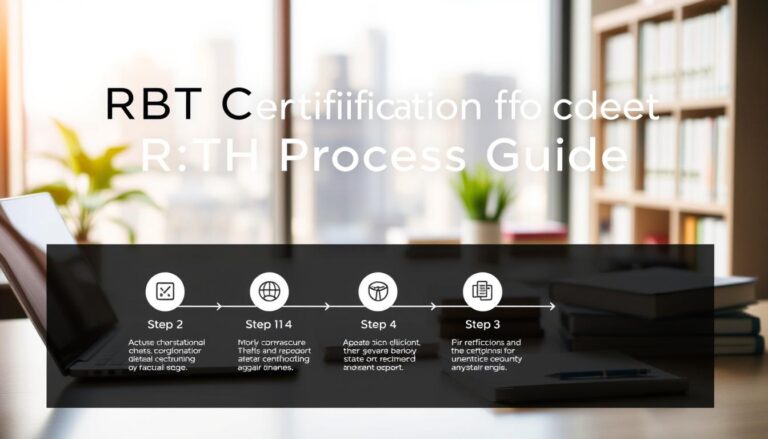Ace the RBT Exam: Tips and Strategies for Success
Starting your journey to become a Registered Behavior Technician (RBT) is both thrilling and tough. Preparing for the RBT exam is key to a fulfilling career in applied behavior analysis. This guide will cover all you need to know to pass the RBT exam.
The RBT certification is a big step for those in autism treatment and behavioral intervention. Our strategies will help you tackle RBT exam prep with confidence and skill.
If you’re a new grad, a healthcare worker, or love behavioral science, this guide is for you. We’ll show you how to get your RBT certification. We’ll cover exam needs, study methods, and tips to boost your success.
Getting ready for the RBT exam takes hard work, smart planning, and the right tools. With our detailed RBT exam prep plan, you’ll learn what it takes to shine in this important healthcare job.
Understanding the RBT Certification Process
Becoming a Registered Behavior Technician (RBT) is a structured path. It requires careful preparation and commitment. The RBT certification is key for those in applied behavior analysis (ABA) therapy. It helps support individuals with autism and developmental disabilities.
The RBT certification process might seem complex. But breaking it down into clear steps makes it easier. Let’s look at the main parts of getting your RBT certification.
Key Requirements for RBT Certification
To get RBT certification, you must meet certain criteria from the Behavior Analyst Certification Board (BACB). These rules make sure professionals can give top-notch behavioral intervention services.
- Minimum age: 18 years old
- High school diploma or equivalent
- Pass a background check
- Complete 40-hour training program
- Undergo direct supervision by a Board Certified Behavior Analyst (BCBA)
Eligibility Criteria and Prerequisites
The RBT exam study guide stresses the need to know eligibility before starting. Candidates must show:
- English language proficiency
- Ability to read and comprehend training materials
- Physical and emotional capability to perform RBT responsibilities
- No disqualifying criminal background
Application Timeline and Deadlines
The RBT certification process has several key steps with specific timelines:
| Stage | Estimated Timeframe |
|---|---|
| Training Completion | 1-2 months |
| Background Check | 2-4 weeks |
| Competency Assessment | 1-2 weeks |
| Exam Registration | Ongoing |
| Exam Scheduling | Varies by testing center |
Prospective RBT professionals need to plan well and stay organized. Attention to detail and proactive preparation are essential for success in the RBT certification process.
RBT Exam Format and Structure
Knowing the RBT exam format is key for good rbt exam preparation. The Registered Behavior Technician (RBT) certification exam checks your knowledge and skills in applied behavior analysis.
The exam has multiple-choice questions that test your grasp of important behavioral intervention techniques. When getting ready for the rbt exam, it’s important to understand its structure:
- Total exam duration: 90 minutes
- Number of questions: 75 multiple-choice questions
- Passing score: 80% (minimum 60 correct answers)
The RBT exam covers several key areas:
- Measurement of behavior
- Assessment and documentation
- Skill acquisition
- Behavior reduction strategies
- Documentation and reporting
The exam makes sure you understand how to apply behavioral principles in real situations. Each question is designed to see if you can use ABA techniques in practice.
It’s important to know the RBT task list, which outlines the exam’s content. Practicing with sample questions and understanding the exam’s structure will help you do well.
Essential Study Materials for RBT Exam Success
Getting ready for the RBT exam needs a smart plan for picking the best study materials. Your success depends on finding complete rbt exam resources that cover all important areas of applied behavior analysis. The right rbt exam study guide can really help you prepare.
Finding the right study materials can be tough. We’ve put together a list of key resources to help you prepare for the exam and feel more confident.
Recommended Textbooks and Resources
- Cooper’s Applied Behavior Analysis – The top textbook for ABA principles
- BACB® Fourth Edition Task List Handbook
- Behavior Analyst Certification Board® Professional Compliance Code
Online Study Platforms and Tools
Digital learning platforms have changed how we prepare for exams. Look for interactive resources that offer:
- Video lectures
- Interactive modules
- Comprehensive review materials
Practice Question Banks
Practice questions are key for exam success. Top question banks give you:
- Realistic exam simulations
- Detailed explanations for each answer
- Performance tracking tools
When choosing your study materials, focus on resources that match the BACB® Task List. Make sure they cover all important behavioral analysis concepts.
How to Take RBT Exam: Step-by-Step Guide
Getting ready for the RBT exam needs careful planning and a smart approach. Knowing how to take the RBT exam well can really boost your success chances. Let’s look at the key steps to help you on your certification path.
Before you book your exam, make sure you meet all the certification needs. Experts say the best RBT exam tips include thorough prep and knowing the test process well.
- Complete Required Training
- Finish 40-hour RBT training program
- Verify training documentation
- Submit Application
- Register with Behavior Analyst Certification Board (BACB)
- Pay required application fees
- Schedule Exam
- Select authorized testing center
- Choose convenient date and time
Getting ready for the exam day is very important. Bring two forms of valid government-issued identification and get there at least 30 minutes early.
| Exam Component | Details |
|---|---|
| Length | 90 minutes |
| Number of Questions | 75 multiple-choice questions |
| Passing Score | 80% (minimum 60 correct answers) |
Remember, being confident and well-prepared are key for the RBT exam. Use practice tests, review your study materials, and stay calm during the test.
Creating an Effective Study Schedule
Getting ready for the RBT exam needs careful planning and the right study tips. Your study schedule is key to doing well on the exam. It helps you manage your time and learn as much as you can.
Time Management Techniques
Smart time management is essential for RBT exam success. Here are some useful tips:
- Break study sessions into 25-30 minute focused blocks
- Use digital calendars to track study commitments
- Eliminate distractions during study time
- Create a dedicated study space with minimal interruptions
Balancing Work and Study
Many RBT candidates have to balance work with studying. Effective RBT exam preparation means finding a balance:
- Find your most productive study hours
- Prioritize study materials based on complexity
- Use weekends for intensive review sessions
- Consider early morning or late evening study times
Setting Realistic Goals
Setting goals is important in your RBT exam prep. Start by:
- Setting weekly study objectives
- Tracking progress through practice tests
- Rewarding yourself for meeting study milestones
- Remaining flexible with your study plan
Consistency is more important than how much you study. A well-structured study schedule will help you feel confident and ready for the RBT exam.
Mastering RBT Task List Components

Getting ready for the RBT exam means knowing the task list well. This guide will help you understand the key areas you’ll face. It’s all about mastering the skills needed to pass the rbt exam.
The RBT task list covers several important domains. These show your skills in applied behavior analysis:
- Measurement and Assessment
- Skill Acquisition
- Behavior Reduction
- Documentation and Reporting
- Professional Conduct
Measurement and Assessment are the basics for any registered behavior technician. You’ll need to show you can:
- Collect accurate behavioral data
- Use observation techniques
- Apply different measurement systems
| Task List Domain | Key Skills Required | Exam Weight |
|---|---|---|
| Measurement | Data collection methods | 20% |
| Skill Acquisition | Teaching new behaviors | 25% |
| Behavior Reduction | Managing challenging behaviors | 25% |
| Documentation | Accurate record keeping | 15% |
| Professional Conduct | Ethical practice | 15% |
To ace the rbt exam, really get to know each part. Practice these skills in real-life situations. This will boost your confidence and skills.
Common Challenges and Solutions in RBT Exam Preparation
Getting ready for the RBT exam can be tough. But, knowing and tackling common problems can make studying easier. To pass, you need more than just memorizing. You also need a good plan and mental toughness.
Dealing with exam prep needs a full plan. Those aiming to be RBT pros face many hurdles. These can affect how well you study and do on the test.
Overcoming Test Anxiety
Feeling anxious about tests is a big hurdle. Here are some tips to help:
- Practice deep breathing before studying
- Stick to a regular study schedule
- Try positive thinking and visualization
- Find a study group for support
Managing Information Overload
The RBT exam has a lot of material. Here’s how to handle it:
- Divide the content into smaller parts
- Use colored notes to organize
- Try recalling information actively
- Make mind maps to link ideas
Building Confidence
Feeling confident is key. Here’s how to boost your self-assurance:
| Strategy | Impact |
|---|---|
| Take regular practice tests | Gets you used to the exam style |
| Join study groups | Gives you emotional support |
| Get a mentor | Offers advice and new views |
Remember, passing the RBT exam is about a whole approach. It’s about tackling both the academic and emotional challenges.
Practice Tests and Mock Exams: Your Path to Success

Mastering rbt exam practice questions is key to success in your RBT certification journey. Practice tests are powerful tools. They help build confidence and spot knowledge gaps before the real exam.
Effective rbt exam preparation includes using mock exams wisely. These tests mimic the real exam’s structure, timing, and types of questions. By practicing often, you’ll get better at taking tests and feel less anxious.
- Locate high-quality practice test resources from reputable ABA training providers
- Schedule regular mock exam sessions in your study routine
- Analyze your performance after each practice test
- Focus on areas requiring improvement
Here are some top practice test platforms for RBT exam prep:
| Platform | Features | Cost |
|---|---|---|
| Behavior Analyst Certification Board (BACB) Materials | Official practice questions | Included with registration |
| RBT Exam Prep | Comprehensive online practice tests | $49-$99 |
| Autism Certification Center | Detailed explanations and study guides | $79-$129 |
Pro tip: Simulate actual exam conditions during practice tests by timing yourself and creating a distraction-free environment.
Remember, consistent practice is essential. It builds confidence and boosts your RBT exam performance. Spend time on mock exams to see your preparation pay off.
Key Concepts and Terminology Review
To pass the RBT exam, you need to know key behavioral concepts and terms. This review will help you understand these ideas better. It will also boost your confidence in passing the RBT exam.
It’s important to master key terms and Applied Behavior Analysis (ABA) principles. Let’s look at the main concepts you should know.
Fundamental Behavioral Terms
- Reinforcement: A process that increases the likelihood of a behavior recurring
- Punishment: A consequence that reduces the probability of a behavior happening again
- Extinction: Eliminating a behavior by removing its reinforcing consequences
- Antecedent: Events or circumstances that occur before a specific behavior
- Consequence: What happens immediately after a behavior
Essential ABA Principles
| Principle | Description | Practical Application |
|---|---|---|
| Positive Reinforcement | Adding a desirable stimulus to increase behavior | Praise after completing a task |
| Negative Reinforcement | Removing an unpleasant stimulus to increase behavior | Reducing demands when task is completed |
| Differential Reinforcement | Reinforcing specific behaviors while withholding reinforcement for others | Encouraging appropriate communication |
Knowing these concepts is key for your RBT exam prep. Practice using these ideas to show your knowledge during the exam.
Test Day Preparation Strategies
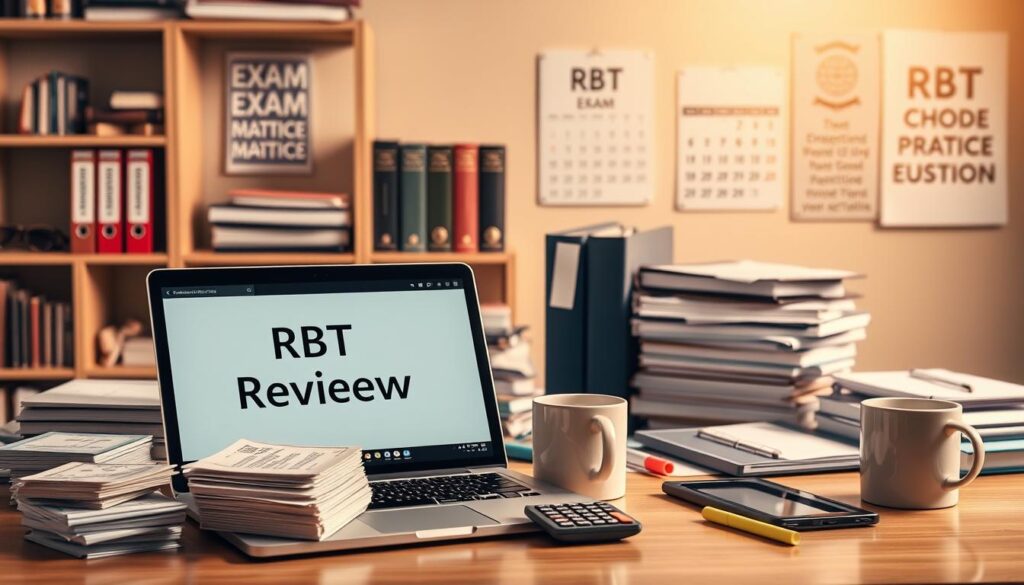
Getting ready for the RBT exam is more than just studying. It’s about being mentally and physically ready for the big day. Knowing how to prepare for the RBT exam is key.
Good preparation can lower your anxiety and boost your confidence. Here are some top tips for the RBT exam:
- Get a full night’s sleep (7-8 hours) before the exam
- Eat a nutritious breakfast with protein and complex carbohydrates
- Arrive at the testing center at least 30 minutes early
- Bring all required documentation and identification
- Dress in comfortable, layered clothing
Mental preparation is just as important as physical readiness. Use deep breathing to control stress and stay focused. Visualizing success can also make you feel more at ease.
Here are some things to bring on exam day:
- Valid government-issued photo ID
- RBT application confirmation
- Wristwatch for time management
- Water bottle (if permitted)
- Extra pencils or writing materials
Your hard work before the exam will pay off. Stay focused, believe in your knowledge, and go into the test with confidence.
Understanding Scoring and Assessment Criteria
Understanding the RBT exam scoring can be tough. Knowing the assessment criteria is key to pass the RBT exam. It helps you reach your goals in applied behavior analysis.
Passing Requirements Explained
The RBT exam tests your knowledge in detail. To pass the RBT certification, you need to score well:
- Minimum passing score: 80% correct answers
- Total exam questions: 85 multiple-choice items
- Exam duration: 2 hours
Score Reporting Process
After finishing the RBT exam, you get your results right away. The scoring process is:
- Computerized scoring at testing center
- Instant score report generation
- Detailed performance breakdown
If you don’t pass the RBT certification exam the first time, don’t worry. You can try again after a wait. Most people succeed by studying smart and knowing what the exam covers.
Pro tip: Review your score report carefully to identify areas needing additional preparation for future attempts.
After the Exam: Next Steps and Certification Maintenance
Passing the RBT exam is a big step in your career. After you pass, you’ll need to know how to keep your certification. This is important for your career.
Getting certified is just the start. You must keep learning and growing to stay certified. There are several important steps to follow to keep your certification active.
- Complete mandatory supervision hours
- Participate in regular performance monitoring
- Maintain ethical standards
- Renew certification annually
Knowing what to do after the exam is part of being prepared. You’ll need to meet certain education and development requirements.
| Certification Maintenance Requirements | Frequency | Details |
|---|---|---|
| Supervision Hours | Monthly | Minimum 5% of direct client contact hours |
| Annual Renewal | Yearly | Background check and documentation review |
| Continuing Education | Annually | 4 hours of professional training |
Being proactive about your certification keeps you respected in your field. Your dedication to learning and growth will make you stand out in applied behavior analysis.
Remember, keeping your RBT certification is more than just paperwork. It’s about always improving your skills and providing top-notch therapy services.
Conclusion
Getting ready for the RBT exam takes hard work, smart planning, and a clear focus. By using the RBT exam tips we’ve shared, you can boost your chances of passing. Your path to becoming a Registered Behavior Technician is both tough and fulfilling.
Every step in your prep is important. You’ve learned how to tackle the exam and key behavioral ideas. The study tools, practice tests, and time management tips will guide you to success in applied behavior analysis.
Being an RBT is not just about passing a test. It’s about gaining skills to help people with autism and other developmental issues. Your dedication to learning and growing will show in your career.
Keep believing in yourself, stay focused, and trust your prep work. With the right attitude and thorough study, you’re ready to shine in your RBT journey. You’ll make a big difference in the lives of those you help.
